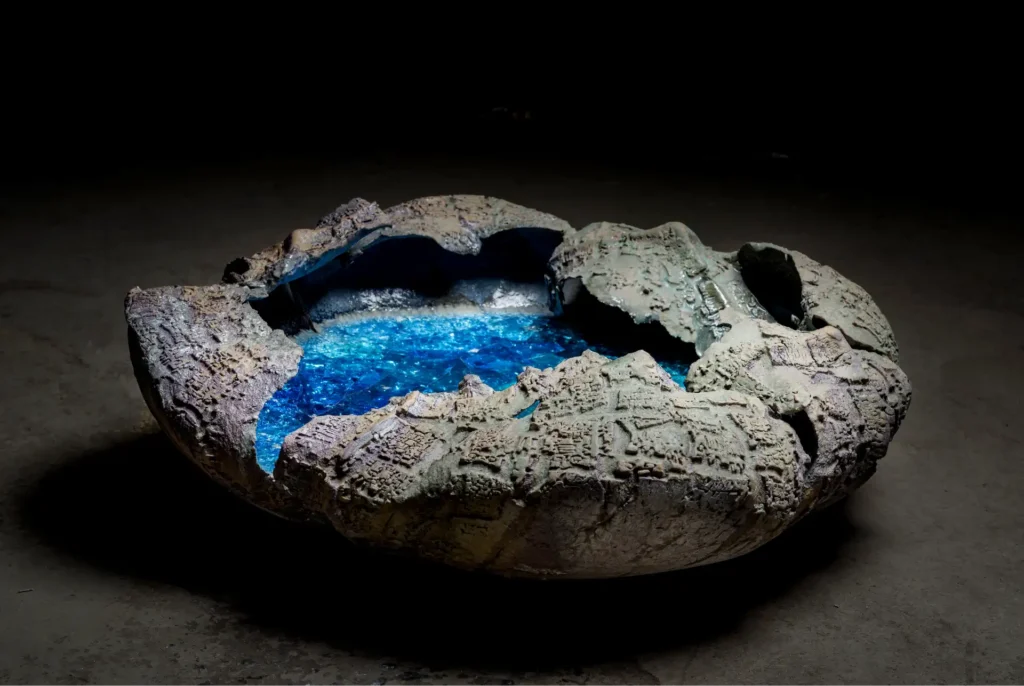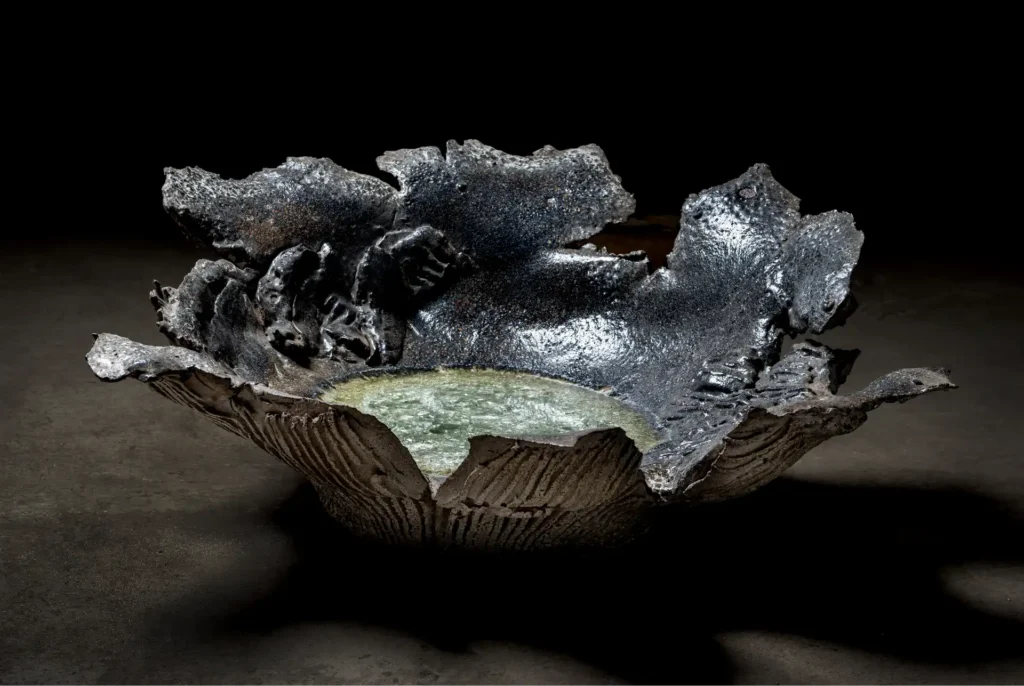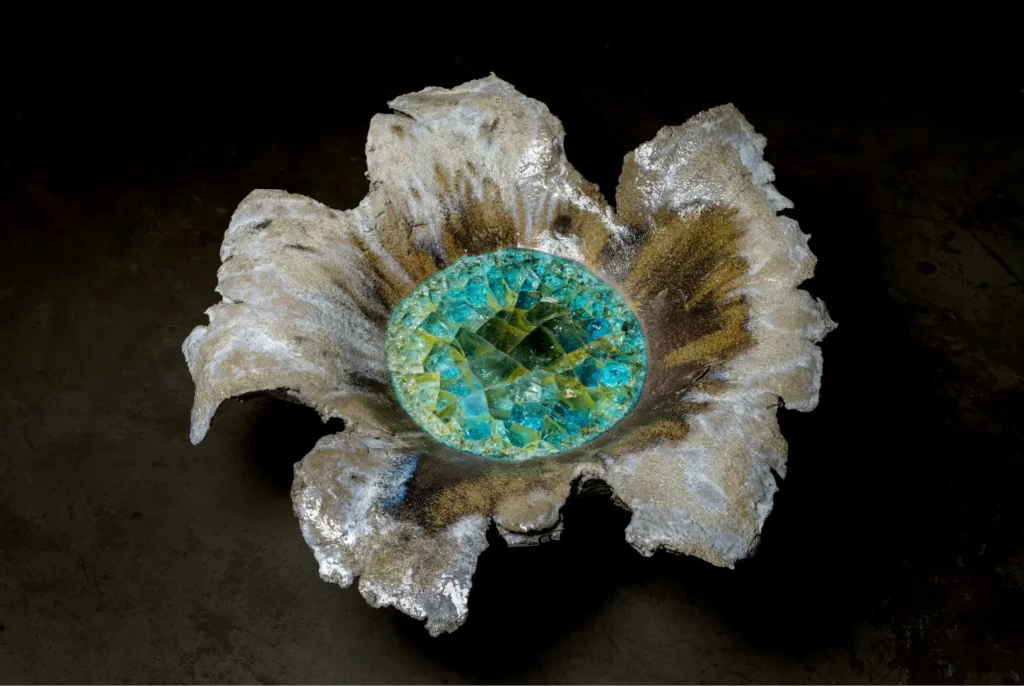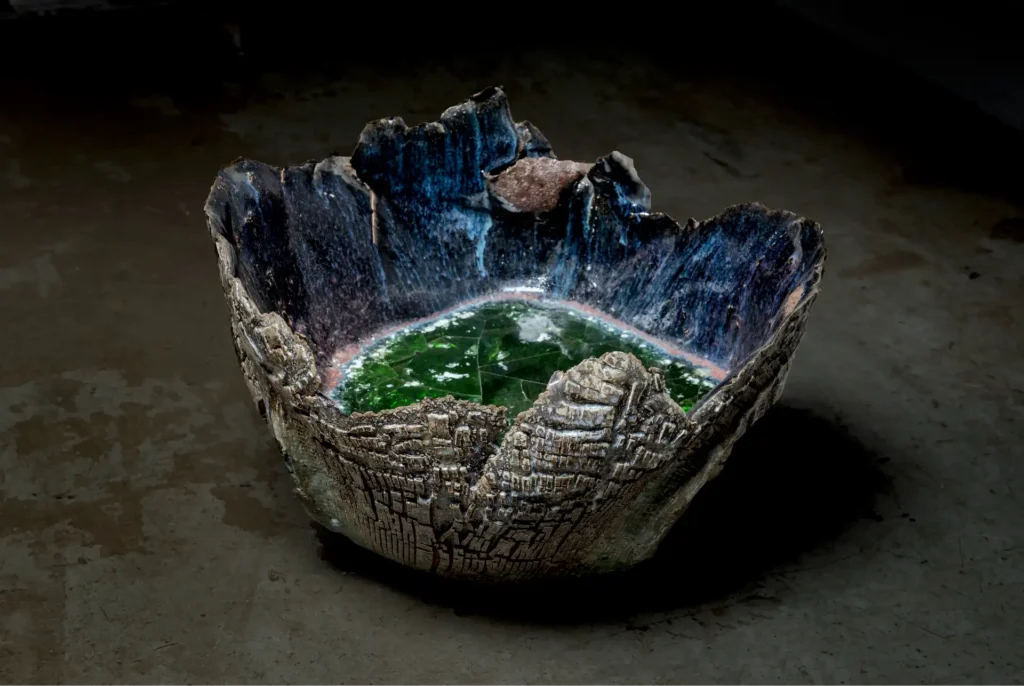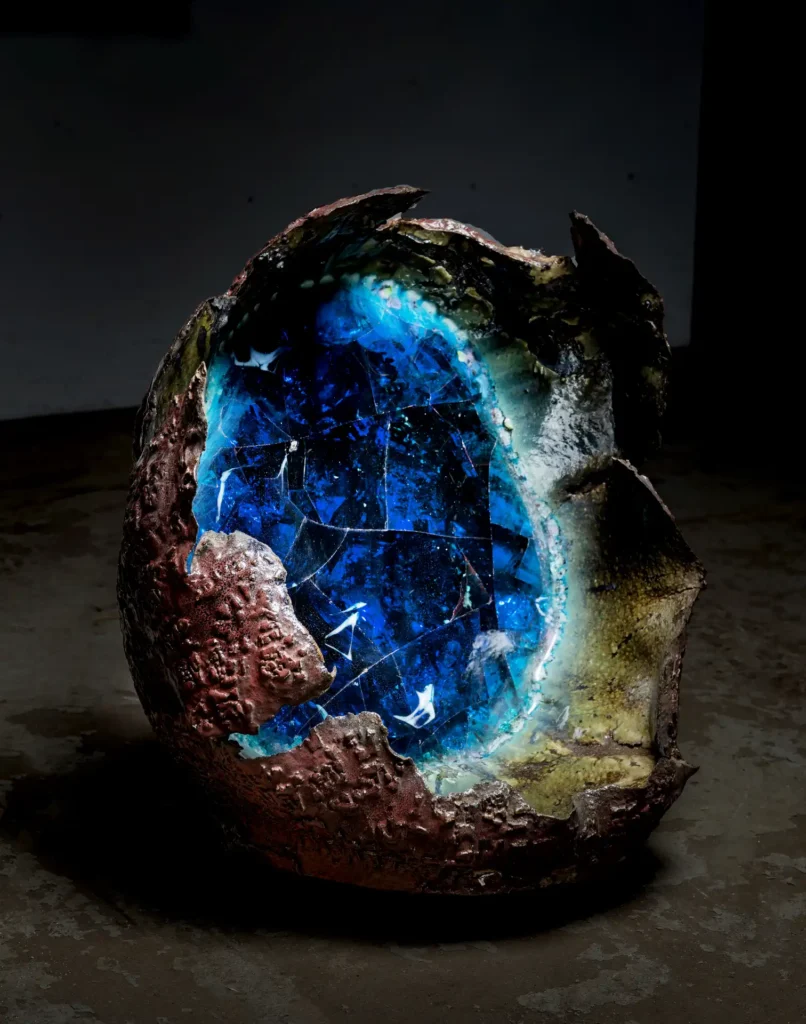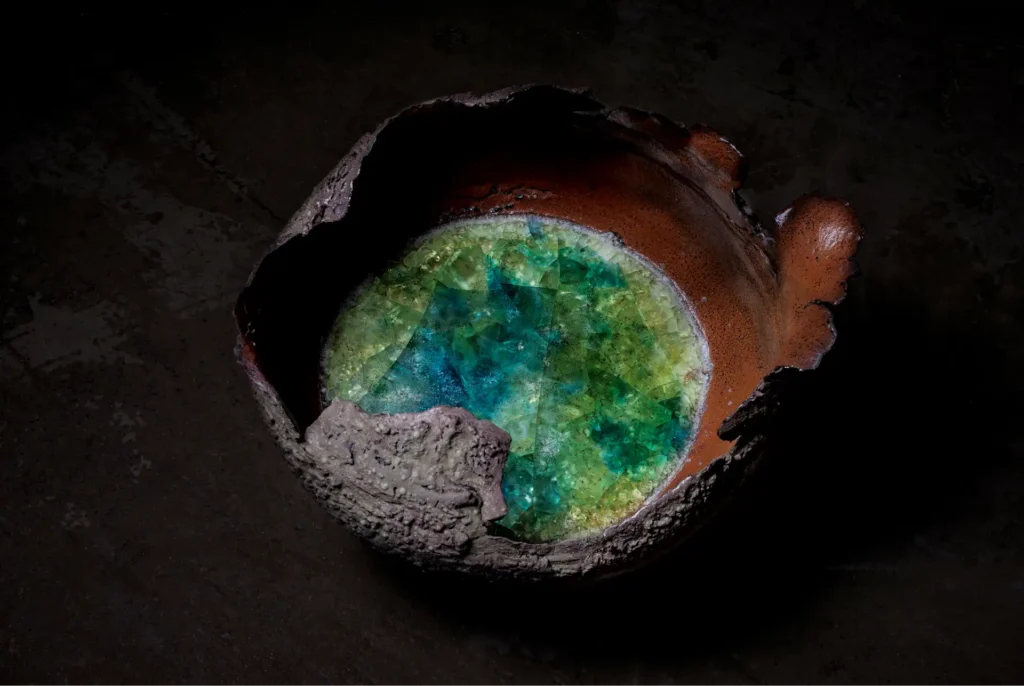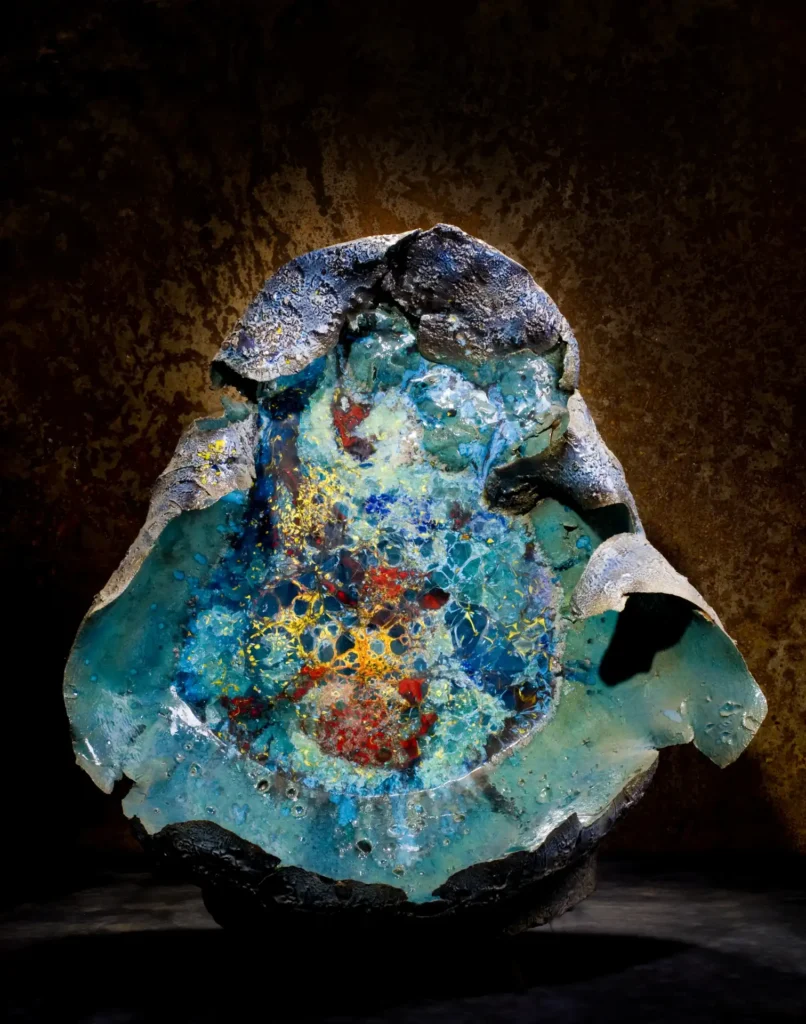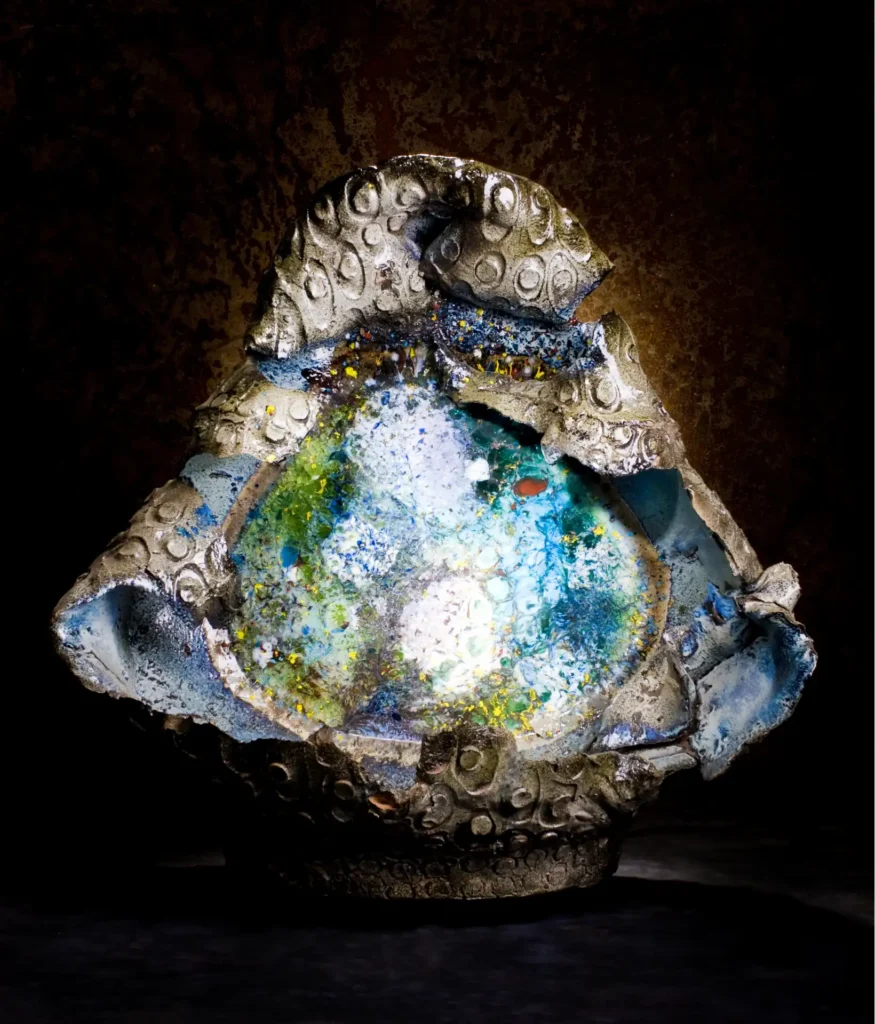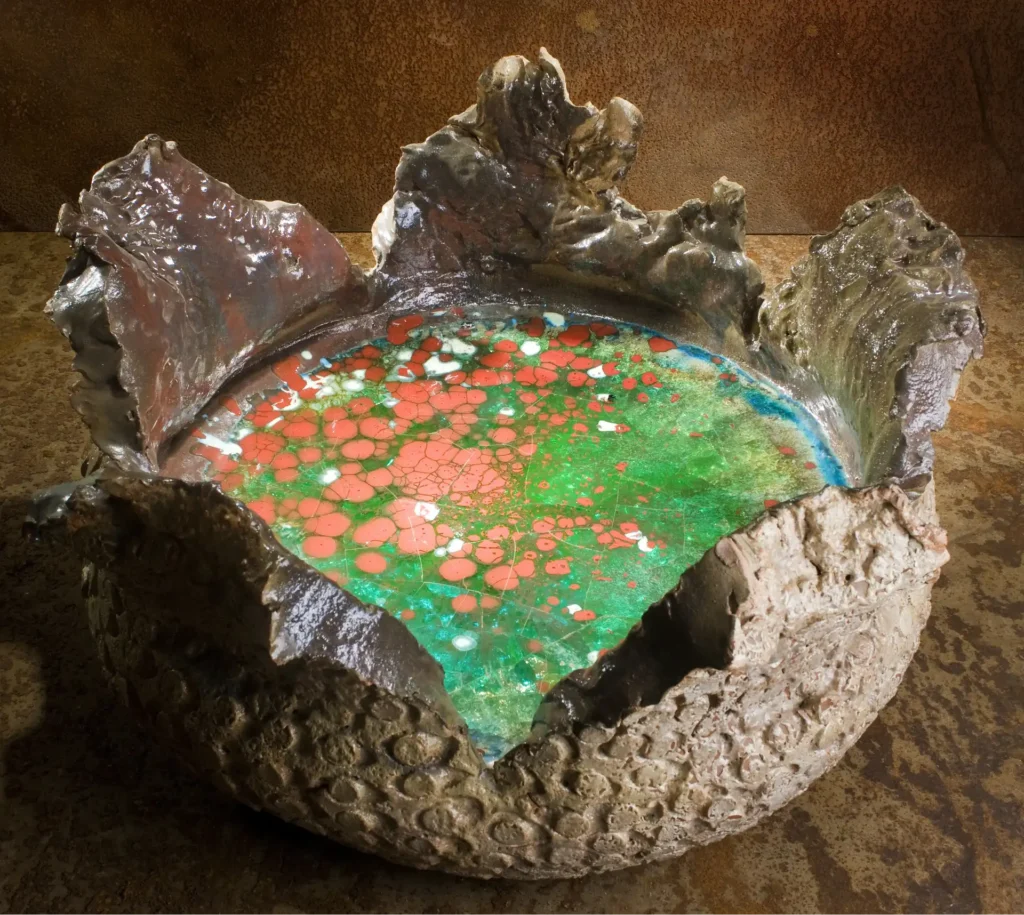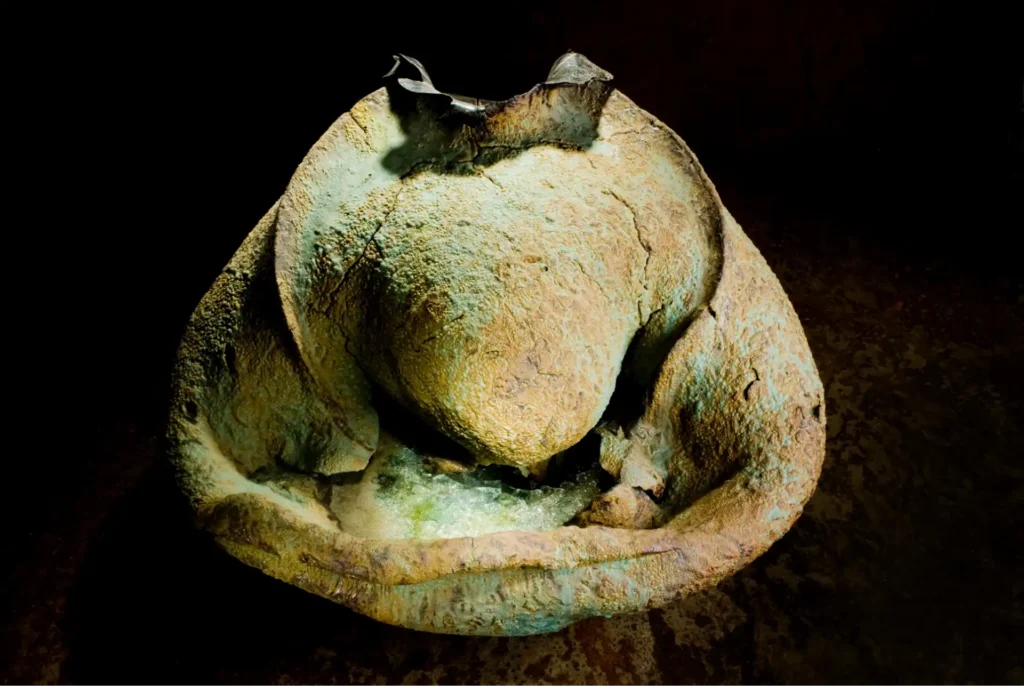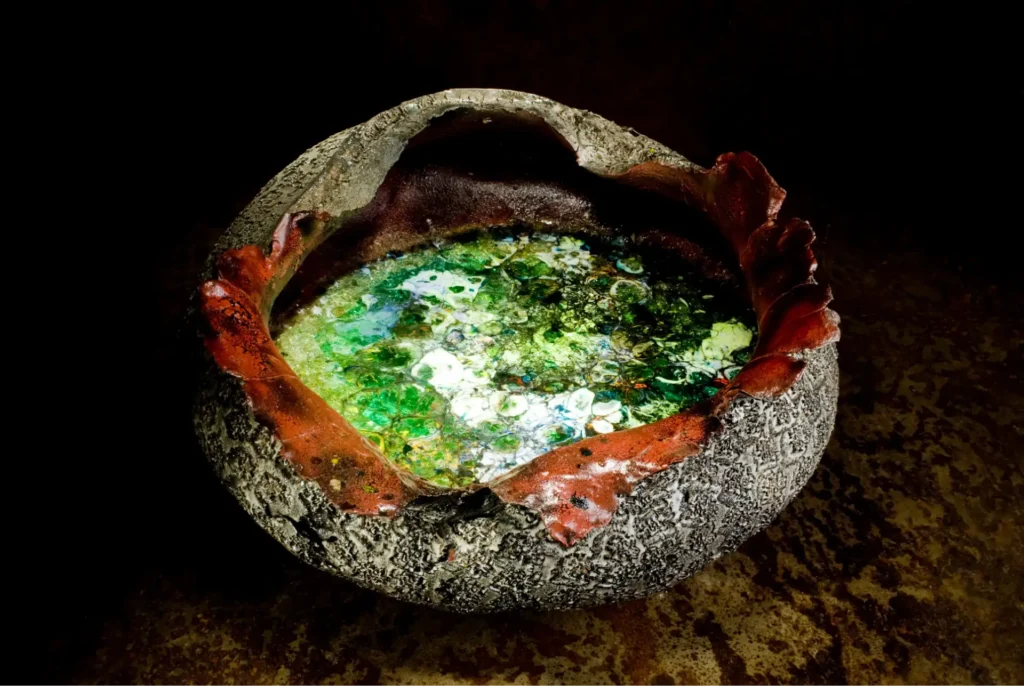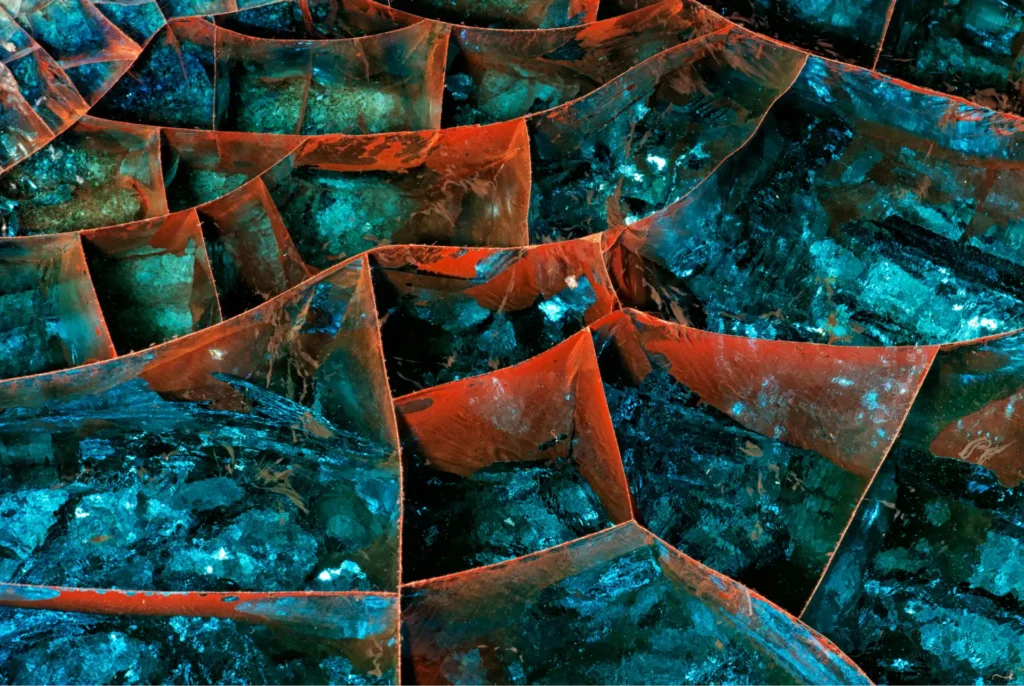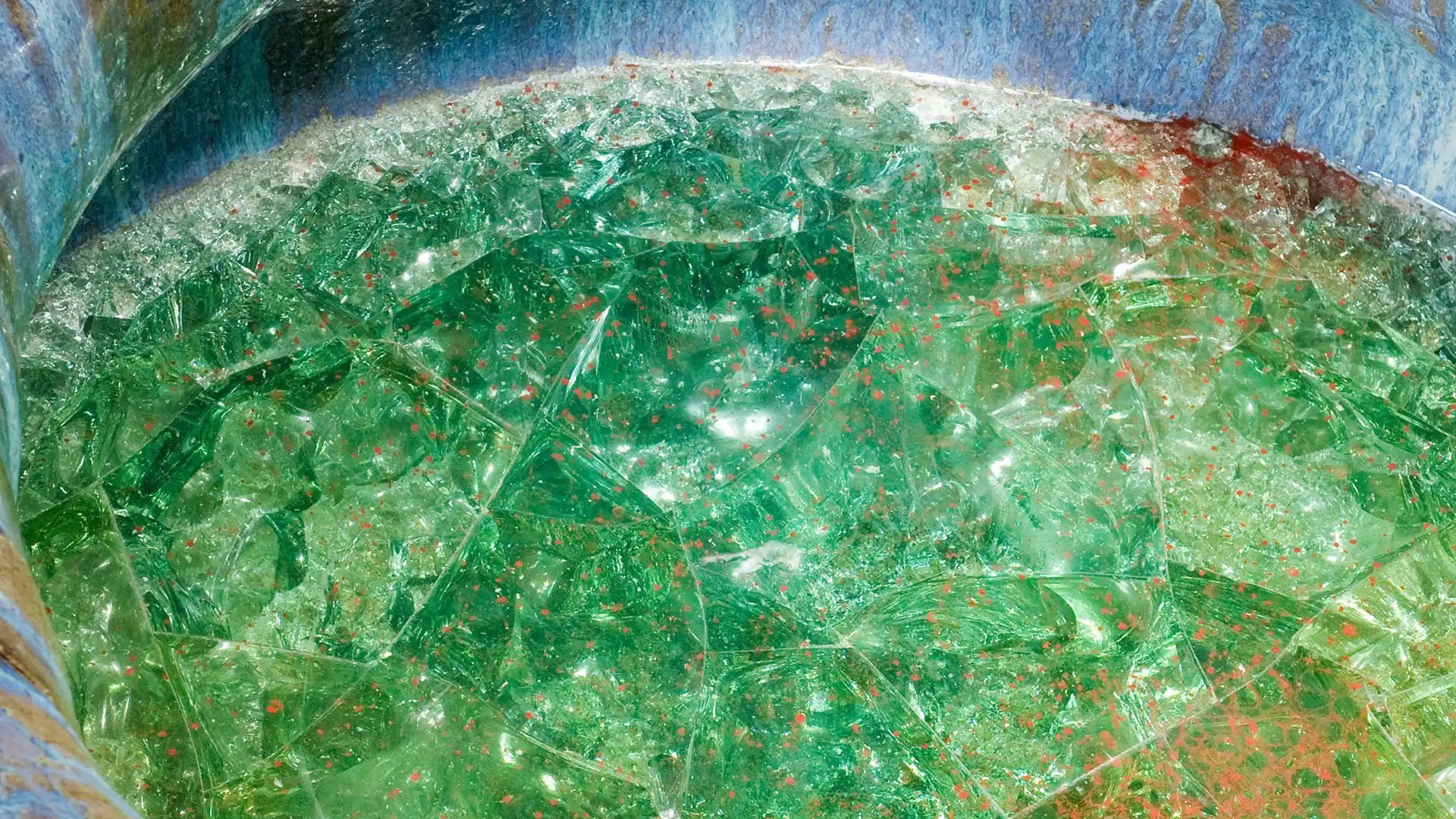Exploded Earth
I use explosives to shape stoneware clay. True to the series title, the forms are shaped entirely by explosives detonated inside solid blocks of wet clay. First, I build a solid geometric form—a cube or a cylinder—up to 4,000 pounds. I then place fireworks inside the solid mass of clay. When detonated, the explosion hollows out the form, and the clay documents the deconstruction of the form, i.e., the movement from order to chaos. It is both destruction and creation in the same event.
The clay “document” is then dried for a year and subsequently reduction fired to cone 10. The fireworks’ explosive residue colors the insides as the piece is fired. When you see fireworks, the blue or red in the sky comes from cobalt, copper, or other metals, which embed in the surface of the exploded clay. These metals produce the same colors in the fired clay.
I add clear glass at the bottom, which dissolves the explosion chemical residues and glazes into the glass, creating natural colors (fluid dynamics) in the glass. This series resembles many natural phenomena because of the shared physics of creation. The earth is a big ball of exploded clay, so many of my pieces look like mountain lakes, hot springs, and other earth geological formations.
The visual similarities to galaxies and other celestial images are not coincidental; they share the same explosive physics of creation. My training is not in art; it is in theoretical mathematics and solid-state physics, so my pattern recognition is not trivial. The visual metaphors and geopolitical eco-implications of my work are visually apparent. True to the series title, the forms are shaped entirely by explosives detonated inside solid blocks of wet clay, with variations in the shape and size of the clay mass and the placement and power of the explosives enhancing the diversity of outcomes.
